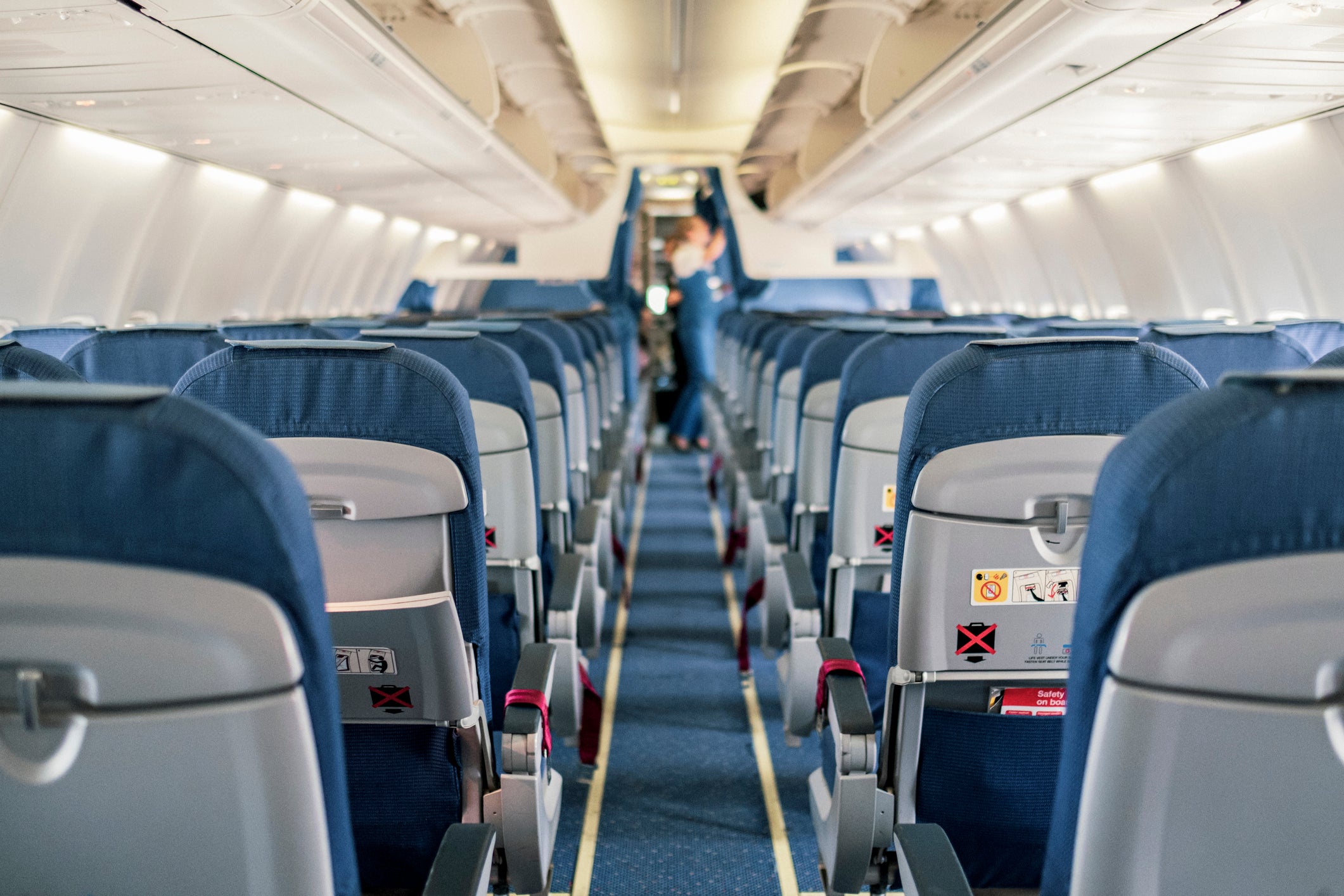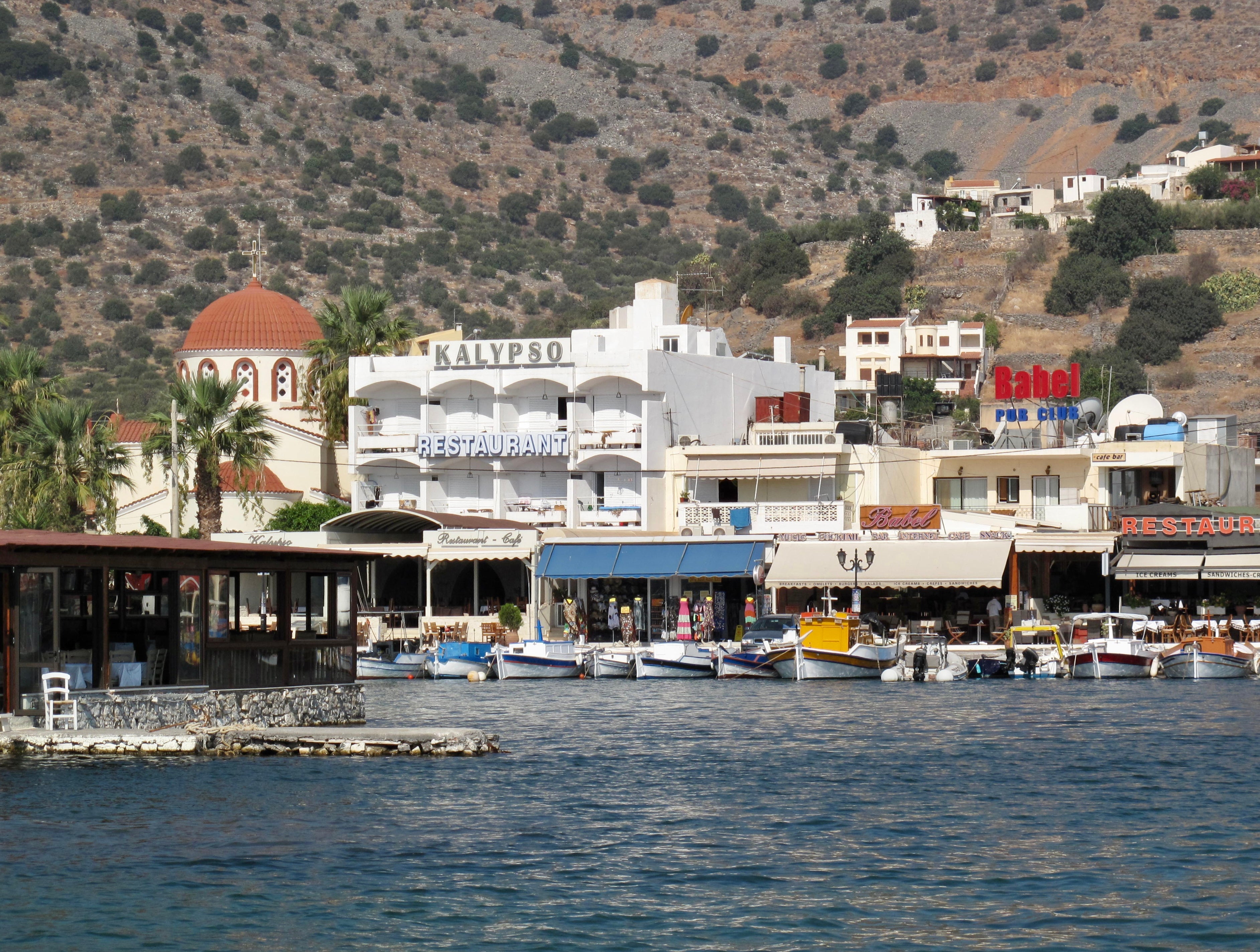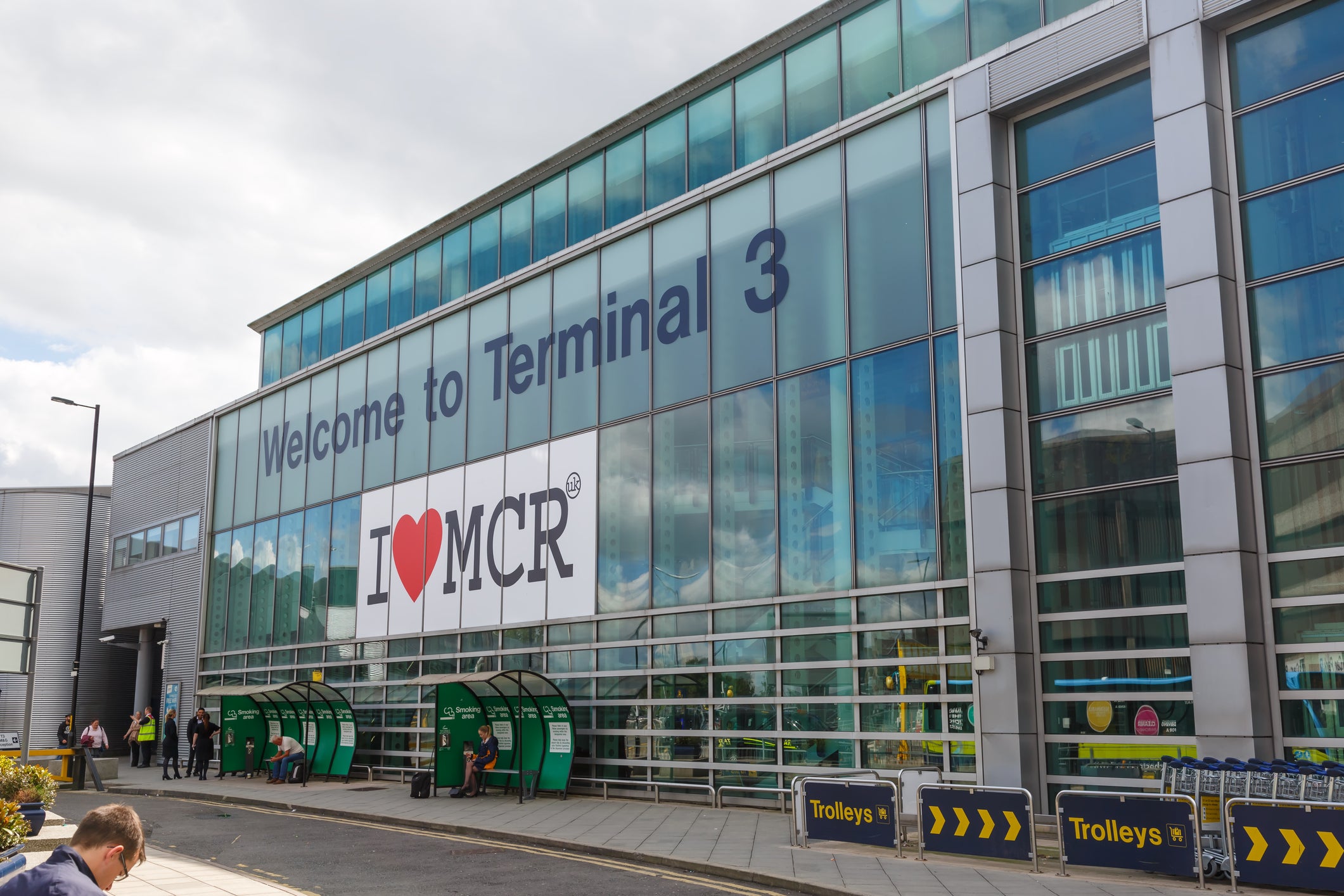Should my 16-hour flight have had reclining seats?
Simon Calder answers your questions on airline seating regulations, Greek holiday destinations and the lesser-spotted Scotland-Manchester flight


Q I recently flew back from the Falklands to the UK via Cape Verde. The flight time from Mount Pleasant airport in the Falklands to Cape Verde is 10 hours, we then spent 90 minutes on the ground, followed by a six-hour flight to RAF Brize Norton. My question relates to seating rules – if there are any. The aircraft used to transport us back to the UK was from Jet2 and had non-reclining seats throughout. Does the CAA stipulate a duration of flight above which reclining seats must be fitted? Or is it just one of those things I have to deal with?
Name supplied
A As a prelude, it is important to note that civilian flights between the UK and the Falkland Islands are unusual. The “South Atlantic Airbridge” covers almost 8,000 miles between the Brize Norton air base in Oxfordshire and Mount Pleasant airport in the Falklands via Espargos in Cape Verde. During the refuelling call, says the Ministry of Defence, “passengers will not be permitted to leave the aircraft”. (In case of adverse weather, they are advised to pack a lightweight sleeping bag, change of clothes and insect repellent in their cabin baggage).
Tickets are not available online, partly because nationals of certain countries are banned from the flight. Prospective passengers are told instead to contact the Falkland Islands Government Office in London (020 7222 2542) or email travel@falklands.gov.fk to book the flights. The services themselves are not operated by Jet2, even though the livery of the Airbus A330 may suggest so. They are run by AirTanker, a reputable aircraft leasing company and provider of capacity to both civil airlines (including Jet2) and the military.
“The aircraft is configured with a single-class cabin comprising 291 premium economy seats,” says AirTanker. I think many passengers would take issue with describing the seating as “premium economy”. Anyway, I checked with Civil Aviation Authority. The only stipulations on seating are about emergency evacuation, and in particular passengers’ ability to move into the aisle without impediment (which includes all reclining seats being in the upright position, of course). But there is no requirement for seats to recline – nor indeed any rules about on-board toilets. On this long haul, though, there are certainly some loos.

Q Suggestions, please, for a Greek holiday for an older lady, preferably near a beach and leaving from Edinburgh?
Annie A
A The choice of direct flights to Greece from Edinburgh is largely restricted to the usual suspects: Athens and Thessaloniki on the mainland, and the island destinations of Crete (landing in Heraklion), Kos and Rhodes. Were you prepared to travel to Manchester, you would find plenty more options on offer. Yet I think you will find the holiday you need by flying into Crete – served from Edinburgh by easyJet on Saturday afternoons.
The city of Heraklion is not the most beautiful place on the biggest Greek island, but I recommend a couple of nights there. The easyJet plane arrives at 8.40pm, so you will appreciate a nearby hotel. For your first full day, make an early start to explore the astonishing (if over-restored) ancient city of Knossos. Engage a guide to make the most of the ruins. Later, as the day warms up, the air-conditioning in the Heraklion Archaeological Museum will be a blessing.
The main cultural highlights ticked off, you can escape to the beach. About an hour’s drive west of Heraklion (or 75 minutes on the regular and reliable buses), Rethymnon is a perfectly good seaside resort with a good beach. But I recommend instead travelling the same distance east to Elounda. This tranquil location has a good beach fringed with tavernas, plus small and friendly places to stay.
To seal its appeal, Elounda comes with two intriguing day trips. One is along the coast to the small port city of Agios Nikolaos, well worth exploring. The other involves a boat to the offshore island of Spinalonga – a Venetian settlement, once a leper colony, that is rich in history and intrigue.

Q I’ve still not had a refund from my insurer for £800 to replace cancelled flights due to French air traffic control strikes. What should I do?
Alison H
A I am not surprised to learn that you have not had a refund from your travel insurer. It is the responsibility of the airline that cancelled the flight, whatever the cause – in this case, the semi-closure of French airspace in September. But I am puzzled that the insurer does not appear to have told you to claim instead from the cancelling carrier.
As soon as an airline grounds a flight, for any reason whatsoever, its responsibility to the passenger is clear. The Civil Aviation Authority (CAA) says: “Where a flight is cancelled by an airline, it should offer re-routing among other options – a comparable journey with the same carrier, or a journey provided by another carrier – and if this option is selected by the passenger, reimburse any additional costs for re-routing.”
In this context, the term “re-routing” is unhelpful. It simply means “an alternative flight”. For example, suppose your Barcelona-London Gatwick departure is cancelled by easyJet. If the airline has no other way to get you home on the same day, then it must pay for your ticket on British Airways or Vueling.
The CAA specifies: “Where flights are cancelled, consumers should be supported and their rights upheld to ensure they get the best outcomes.” But I have watched a wide range of airlines fail to provide the stipulated support. In practice, hundreds of thousands of passengers who have had their flights cancelled this year have had little option but to pay hundreds of pounds and then claim it back.
As soon as you contacted your travel insurer, they should have explained the airline’s obligation so you could pursue the carrier. Unfortunately, it is probably not going to be easy. The CAA says: “Payments must be made promptly to consumers.” It also notes that “a very lengthy delay in reimbursement may also amount to an aggressive practice as the very fact of delay can dissuade consumers from exercising their rights to receive payment”. But unless and until the regulator decides to penalise carriers, I suggest you write a “letter before action” asking for your entitlement and follow it up at Money Claim Online if you do not get a suitable response.

Q Why are there no direct flights from Edinburgh or Glasgow to Manchester?
Meg F
A The short answer is: airlines think they would lose money on either of these links – or, perhaps more kindly, they believe their assets can be more profitably deployed elsewhere.
In earlier times, both Edinburgh and Glasgow had fairly frequent links with Manchester airport. The two biggest Scottish cities are respectively 185 and 195 miles from Manchester, which is the third-busiest airport in the UK (after Heathrow and Gatwick). When road and rail links were poorer, and airport formalities easier, many people flew these short domestic routes because it was significantly faster than the terrestrial alternatives. With the trip typically under an hour, gate-to-gate, taking the plane made sense for a lot of time-sensitive journeys between Scotland’s Central Belt and northwest England.
As rail alternatives improved and the airport experience worsened, such point-to-point trips became less popular. Direct electric trains link both Edinburgh and Glasgow with central Manchester in three hours 15 minutes, and there are similar rail services to and from Liverpool, Preston and Warrington in the Manchester airport catchment area. Today very few people would fly from Edinburgh or Glasgow if they just wanted to go somewhere in northwest England. Which leaves connecting travel. In many parts of the world it is perfectly normal for big international airports to have short hops to cities 150-200 miles away. For example, Paris CDG has multiple daily links with both Brussels (157 miles) and Luxembourg (171 miles). Before the first version of Flybe went bust in 2020 (just before the Covid pandemic), it had withdrawn Glasgow-Manchester but was still flying Edinburgh-Manchester four or five times a day.
Some of those passengers might be going from the Manchester area via the Scottish capital to other points (eg Orkney and Shetland or Scandinavia), but most were connecting to or from international flights serving Manchester. With aviation still around one-sixth down on pre-pandemic levels, and regional airports such as Manchester with fewer intercontinental links than they had in 2019, the demand for connecting flights to and from Scotland is lower than it was. Tellingly, while a large majority of former Flybe links have been resurrected by other carriers, Manchester-Edinburgh has not. But once Rishi Sunak’s plan to halve air passenger duty next April takes effect, that route might yet resume.
Email your question to s@hols.tv or tweet @simoncalder






Join our commenting forum
Join thought-provoking conversations, follow other Independent readers and see their replies
Comments